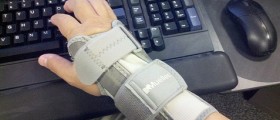
Dystonia is a movement disorder characterized by involuntary muscle contractions in various parts of the body. It can be caused by hereditary factors, but it can also be associated with trauma, infections, poisoning, particularly lead poisoning, and certain medications. Main types of dystonia are generalized, focal, segmental and multifocal dystonia.
Dystonia caused by medications is also called tardive dyskinesia and it is mainly associated with high doses or prolonged use of neuroleptic medications. In babies and children, this form of dystonia can also be caused by medications administered for gastrointestinal disorders.
Dystonic reactions to drugs are generally not life-threatening, but they can be very violent, painful and generally unpleasant. The reactions involve muscle contractions of the face, neck, arms, legs, hands, feet, trunk and pelvis.
Medications and dystonia
Dystonic reactions usually start shortly after starting neuroleptic drug therapy, anywhere between 48 hours and five days upon initiation of drug treatment. They are often idiosyncratic and unpredictable, although they can be associated with the dosage. The chances of developing medication-induced dystonia are higher with high doses and prolonged use of a drug.
Drugs that have been associated with this type of dystonia are all forms of antipsychotics, but also antidepressants and antiemetics. In addition, there were cases where dystonia was associated with street drugs, cocaine in particular.
Alcohol seems to increase the risk of dystonic reaction if combined with neuroleptic drugs.
Dystonic reactions are believed to be associated with alterations of dopaminergic-cholinergic balance in basal ganglia.
The incidence of medication-induced dystonia depends on factors such as overall health, age, the type of medication, individual susceptibility, dose and duration of treatment. It is estimated that 2% of people on long-term neuroleptic therapy suffer from this type of dystonia.
When it comes to age and sex, medication-induced dystonia is more common in men then in women and it particularly affects infants, children and adolescents. It seems that the risk of reaction to medication decreases with age.
Clinical presentation of medication-induced dystonia
Patients who seek medical attention for dystonic reactions to medications may present with abnormal eye movement and eye deviation, protrusion of tongue, law problems that make it difficult to speak and swallow, locked jaw, forced jaw opening, grimaces, neck twisting and head tilting to one side, abnormal posture due to spine and pelvis twisting.
Other than that, there are no other symptoms of problems, vital signs are usually normal and mental status appears unaffected.














_f_280x120.jpg)


Your thoughts on this
Loading...